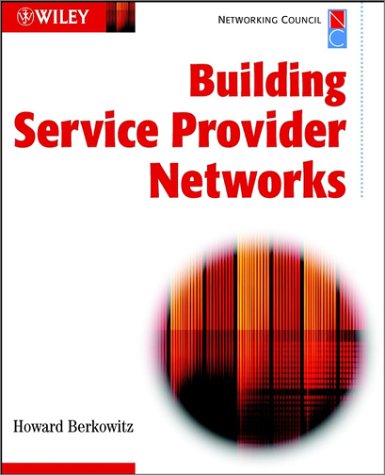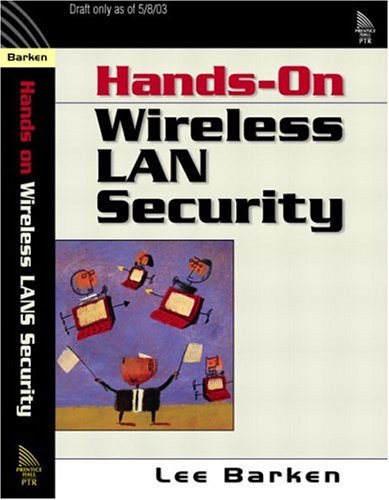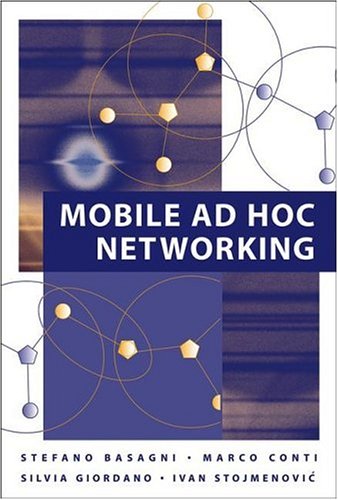Howard C. Berkowitz9780471099222, 0-471-09922-8
Table of contents :
Cover……Page 1
Contents……Page 8
Networking Council Foreword……Page 18
Overview of the Book and Technology……Page 20
How This Book Is Organized……Page 21
Who Should Read This Book……Page 22
1 What Is the Problem to Be Solved?……Page 24
The User Culture……Page 25
The Implementer Culture……Page 26
What Services Do Users Want?……Page 27
Responding to New and Converged Service Requirements……Page 47
Fundamental Principle 1: Don t Break What Already Makes Money……Page 49
Fundamental Problem 2: Keep Everything Scalable……Page 52
Looking Ahead……Page 56
2 The Service Provider Landscape……Page 58
History: The Basis for WAN Regulation and Competition……Page 59
Models Evolve……Page 61
What Are All These Devices Doing?……Page 80
An Introduction to Scalability Issues in the Modern Internet……Page 96
Looking Ahead……Page 101
3 Services, Service Level Agreements, and Delivering Service……Page 102
Defining Services: The Context for Policy……Page 103
SLAs……Page 108
First Class, Business, Economy, or Baggage?……Page 113
Connectivity Policies 1: Load Sharing, Fault Tolerance, Multilinking, and Multihoming……Page 114
Connectivity Policies 2: Intranet, Extranet, and Internet To Say Nothing of IPv6……Page 115
Customer Service……Page 116
Representative Service Requirements……Page 117
Looking Ahead……Page 130
4 Translating Service Definitions to Technical Requirements: Policies……Page 132
The Delicate Balance: But I Wanna Learn BGP!……Page 134
Returning to Policies……Page 135
Policy Notation with RPSL……Page 137
Specifying Routing Policies and Actions……Page 146
Proprietary Policy Notations……Page 153
Representative Requirements for Routing Policies……Page 156
Service Level Policies……Page 171
Accounting Policies……Page 174
The IP- VPN Address Family and Routing Notation……Page 176
Complex VPN Case Study……Page 177
Looking Ahead……Page 181
Technical and Cultural Assumptions about Addressing……Page 182
Registered and Private Space……Page 184
Route Aggregation……Page 194
Working with Registries……Page 202
Managing Your Address Space……Page 207
Autonomous Systems……Page 218
IPv6 Address Allocation……Page 220
Renumbering……Page 226
Looking Ahead……Page 227
6 Carrier Facilities: Getting Physical……Page 228
Carrier Business Models……Page 229
Carrier Classness……Page 230
Service Provider Vendor Relationships……Page 232
The Facility Conundrum……Page 234
Non- Facility- Dependent Service Providers……Page 235
Carrier- Quality Installations……Page 238
The Human Resource and Its Management……Page 248
Looking Ahead……Page 254
7 The Provider Edge: Layer 1, Layer 2, and the PSTN……Page 256
The First- Meter, First- 100- Meter, First- Mile, and Second- Mile Problems……Page 257
Modem Wholesaling, Virtual POPs, and the Beginning of Media Gateways……Page 270
Emerging Technologies……Page 273
PSTN Integration……Page 293
Looking Ahead……Page 302
8 Transporting the Bits: The Sub- IP and Physical Intraprovider Core……Page 304
Basic Layer 1 Resilient Media……Page 305
Advanced Grooming and Merging……Page 307
Incumbent Carrier Facilities……Page 309
Evolution to First- Generation Optical Facilities……Page 313
Models for Survivability……Page 317
Optical Service Offerings……Page 321
New Facilities……Page 326
Evolution or New Species? Circuits without Resources, ATM without Cells, and GMPLS……Page 330
IP over Optical……Page 332
Looking Ahead……Page 333
9 Basic BGP and the Customer Side of Exterior Routing……Page 336
BGP Never Stands Still……Page 337
BGP, iBGP, and eBGP……Page 339
So What Does BGP Do?……Page 341
A First Look at iBGP……Page 360
RIBs and Routes……Page 361
Customer Configuration Requirements Overview……Page 366
Multilinking and Multihoming: The Customer Side……Page 367
Starting Simply: Defaults……Page 370
Multihoming to Multiple POPs of a Single ISP……Page 371
RFC 2270……Page 375
Multihoming to Two ISPs……Page 378
Importing and Exporting among Routing Protocols……Page 386
Looking Ahead……Page 390
10 Subscriber to Provider, and Subscriber to Subscriber Edge: IP……Page 392
Taking Orders……Page 393
POPs and Layer 2 Switches……Page 402
Basic POP Design with Dedicated Customer Access……Page 405
Intra- POP Routing……Page 406
Scalability Issues: Protecting the Routing System……Page 410
Scalability Issues: Protecting Routed Traffic……Page 414
The Provider Side of Basic Customer Requirements……Page 416
Complex Fault- Tolerant Routing with Mutual Design between Provider and Customer……Page 421
Service Level Classification and the ISP Challenge: When to Oversubscribe, When to Overprovision……Page 434
Looking Ahead……Page 440
11 The Intraprovider Core: IP/ MPLS……Page 442
Developing Requirements: Pipes, Hoses, and Trunks……Page 444
Core Routing Scalability……Page 450
Core Design Issues in Transition……Page 468
Traffic Trunks……Page 470
Core Fault Tolerance……Page 479
Sub- IP Core Technologies……Page 488
Traffic Engineering Deployment……Page 490
Looking Ahead……Page 494
12 The Provider- to- Provider Border……Page 496
Interprovider Economics: The Most Important Part……Page 497
Interconnection Strategies: The Second- Most Important Part……Page 506
What Should You Advertise and Accept?……Page 508
eBGP Scalability and Survivability……Page 520
Exchange Point Design and Operation……Page 526
Special Connectivity……Page 537
Looking Ahead……Page 538
13 VPNs and Related Services……Page 540
When Management Is Outsourced……Page 541
Evolution from Outsourced Management to VPNs……Page 542
Endpoints and Midboxes……Page 543
User Perception of VPN Types and Capabilities……Page 548
VPN Internal Services……Page 554
Provider- Provisioned VPN Technologies……Page 561
Case Study: VPN Connectivity Strategy……Page 573
Potential Technical Solutions for Magic Images……Page 574
Conclusion……Page 576
References……Page 578
Index……Page 584







Reviews
There are no reviews yet.